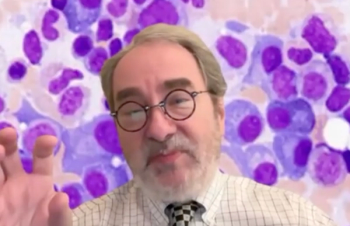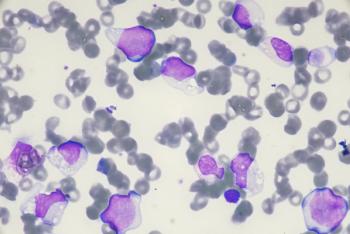
Glatiramer effective in delaying clinical MS
Glatiramer represents a new option for delaying conversion of clinically isolated syndrome (CIS) to clinically definite multiple sclerosis (CDMS), according to the results of a new study known as PRECISE, presented at the 60th Annual Meeting of the American Academy of Neurology, Chicago.
Key Points
Glatiramer represents a new option for delaying conversion of clinically isolated syndrome (CIS) to clinically definite multiple sclerosis (CDMS), according to the results of a new study known as PRECISE, presented at the 60th Annual Meeting of the American Academy of Neurology, Chicago.
Interferon-beta preparations were previously demonstrated to delay the development of CDMS. With the favorable results observed with glatiramer in PRECISE, "We now have a second potential treatment for early MS," said the study's lead investigator Giancarlo Comi, MD, Department of Neurology, University Vita-Salute San Raffaele, Scientific Institute San Raffaele, Milan, Italy.
The first presentation of an unpredictable, self-limited attack of neurologic dysfunction caused by focal or multifocal inflammatory demyelination within the central nervous system (CNS) is termed a CIS. It implies risk for future CNS attacks and relapsing-remitting MS (RRMS).
The double-blind phase was scheduled for 36 months, during which patients were randomly assigned to treatment with subcutaneous glatiramer 20 mg/d or placebo, unless a second attack was experienced and patients were diagnosed with CDMS. During the double-blind phase, patients underwent brain MRI scans every 3 months. Patients who converted to CDMS continued the trial on active treatment for an additional 2 years. The primary efficacy end point was time to CDMS, based on a second clinical attack.
A preplanned interim analysis was performed at 2.4 years, representing 81% of the 3-year placebo-controlled study exposure. At the time of the interim analysis, the Data Safety and Monitoring Board recommended that the trial be halted and that patients randomized to placebo be given the opportunity to receive glatiramer.
At the time the trial was stopped, the risk of conversion to CDMS was 24.7% in the patients assigned to glatiramer compared with 42.9% in those assigned to placebo, a relative risk reduction of 45% (P<.0001) for the group randomized to glatiramer.
Glatiramer prolonged the quartile time to disease conversion to 722 days versus 336 days with placebo (+115%; HR=0.55; P=.0005).
"The effect [of glatiramer] is significant and independent from the subtype of clinical presentations, T2 lesion load, and the presence of MRI active lesions," said Dr Comi.
Glatiramer was significantly superior to placebo in the total number of T2 lesions (P<.001), the total number of T2 lesions at 1 year (P<.001), the total number of T2 lesions from Year 1 to Year 2 (P=.021), and the number of new gadolinium-enhancing lesions (P=.001).
The safety profile of glatiramer in PRECISE was similar to that observed in studies of RRMS. The overall withdrawal rate up to the interim analysis was 16%.
Newsletter
Get the latest industry news, event updates, and more from Managed healthcare Executive.





















































